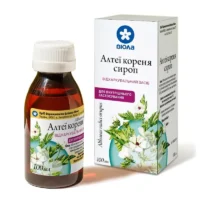Description
Lazolvan Syrup 30 mg/5 ml. 100 ml
Ingredients:
Each 5 ml of Lazolvan syrup contains 30 mg of the active ingredient ambroxol hydrochloride. Other ingredients include sorbitol, glycerol, hydroxyethylcellulose, saccharin sodium, methyl parahydroxybenzoate, propyl parahydroxybenzoate, citric acid monohydrate, sodium benzoate, raspberry flavor, and purified water.
Dosage:
The recommended dosage for adults and children over 12 years old is 10 ml (60 mg) three times a day. For children aged 6-12 years, the recommended dose is 5 ml (30 mg) three times a day. Consult a healthcare professional for children under 6 years old.
Indications:
Lazolvan syrup is indicated for the treatment of respiratory conditions associated with viscid mucus, such as acute and chronic bronchitis, bronchiectasis, and asthma. It helps to loosen and clear mucus from the airways, making it easier to breathe.
Contraindications:
Do not use Lazolvan syrup if you are allergic to ambroxol hydrochloride or any other ingredients in the product. Consult a healthcare provider before use if you are pregnant, breastfeeding, or have liver or kidney disease.
Directions:
Shake the bottle well before use. Use the provided measuring cup to ensure accurate dosage. The syrup can be taken with or without food. Drink plenty of fluids while using Lazolvan syrup to help loosen mucus.
Scientific Evidence:
Ambroxol, the active ingredient in Lazolvan syrup, has been extensively studied for its mucolytic and expectorant properties. Research published in the journal Pulmonary Pharmacology & Therapeutics demonstrated the effectiveness of ambroxol in improving mucus clearance and reducing cough frequency in patients with chronic bronchitis.
Clinical trials have shown that ambroxol can enhance the production of surfactant in the lungs, leading to improved lung function and reduced respiratory symptoms. A study published in Respiration highlighted the beneficial effects of ambroxol in patients with bronchial asthma by reducing airway inflammation and improving pulmonary function tests.
Additional Information:
- Store Lazolvan syrup at room temperature away from direct sunlight and heat sources.
- Do not exceed the recommended dosage as it may lead to adverse effects.
- If symptoms persist or worsen, discontinue use and consult a healthcare professional.





